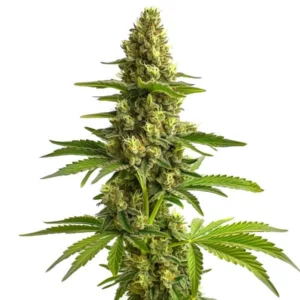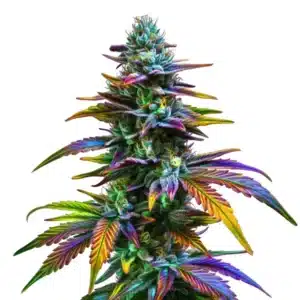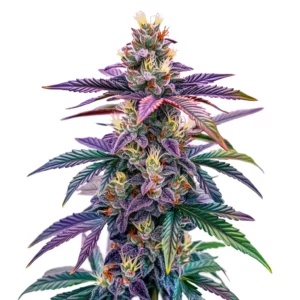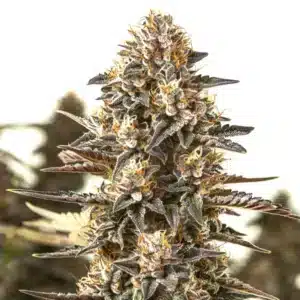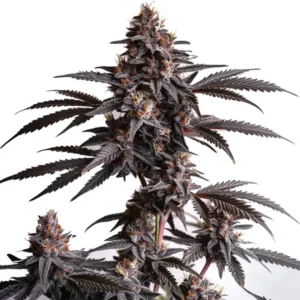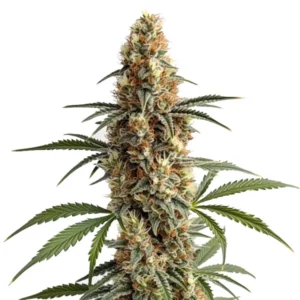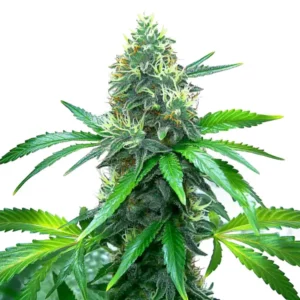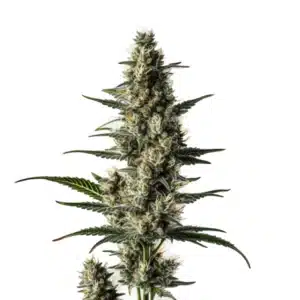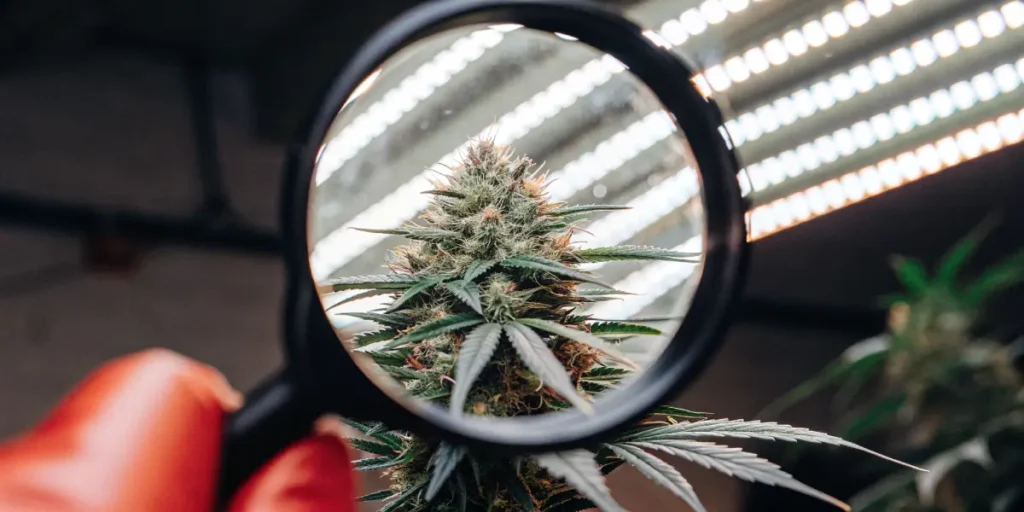
Growing High-THC Strains Under Stress Conditions
Growing high-THC strains under stress conditions might sound daunting, but it’s not as tricky as it seems. Whether you are a first-time cannabis seed buyer or a seasoned grower, knowing how to navigate stress can significantly impact your yield. High-THC strains are known for their potency, and a bit of stress can sometimes enhance this attribute.
Stress factors like temperature fluctuations, light exposure, and nutrient levels can all play a role. By carefully managing these elements, you can optimize your high-THC strain yields under stress. For instance, the famous strain Bruce Banner 3 thrives when grown with just the right amount of light stress.
Recommended Strains
Z OG
|
|
THC | 16% - 20% (Medium) |
|
|
Type | Feminized |
|
|
Yield | Medium |
|
|
Phenotype | 75% Indica / 25% Sativa |
Bruce Banner #3
|
|
THC | 20% - 29% (High) |
|
|
Type | Feminized |
|
|
Yield | Medium |
|
|
Phenotype | 50% Indica / 50% Sativa |
It’s essential to recognize the difference between beneficial stress and harmful stress. Beneficial stress can lead to increased THC potency, while harmful stress might stunt growth or damage plants. Techniques such as controlled light exposure and precise watering schedules are vital in growing cannabis high-THC strains stress adaptation.
Environmental Stress Factors in High-THC Cannabis Growth
One of the primary environmental stress factors affecting high-THC cannabis growth is temperature. Cannabis plants thrive in specific temperature ranges. When exposed to slightly higher temperatures, plants can sometimes produce higher THC levels. However, too much heat can be detrimental.
Light stress is another crucial factor. While cannabis plants need ample light, too much can lead to bleaching and lower yields. Strains like Gorilla Glue 4 can handle stress well, but they still require balanced light exposure. This balance is crucial for stress-induced THC enhancement techniques.
Humidity levels also play a significant role in environmental stress factors high-THC cannabis growth. High humidity can promote mold and mildew, while low humidity might cause plant dehydration. Monitoring and adjusting humidity can help prevent these issues and ensure healthy plant development.
Wind or airflow is another factor that can cause stress. While some airflow is necessary to strengthen plant stems and prevent mold, excessive wind can damage leaves and branches. Proper ventilation systems can help create an optimal growing environment.
Techniques for Optimizing High-THC Strain Yields Under Stress
Optimizing high-THC strain yields under stress involves several techniques, including careful nutrient management. Over-fertilizing can lead to nutrient burn, which stresses plants. Instead, opt for a balanced nutrient mix to keep plants healthy.
Another technique is adjusting water supply. Too much or too little water can stress plants. Monitor soil moisture levels and adjust watering schedules as needed. This approach helps in maintaining healthy plants even under stress conditions increasing THC potency.
Pruning is an effective technique that can optimize high-THC strain yields under stress. By removing dead or overcrowded foliage, growers can focus the plant’s energy on producing high-potency buds, enhancing overall yield and quality.
Utilizing stress conditions increasing THC potency, growers can implement stress-induced THC enhancement techniques like controlled temperature drops during the flowering stage. This can stimulate the production of trichomes, which are rich in THC.
Promos & Deals
Strain Selection for Stress Conditions
Selecting the right strain is crucial when growing high-THC strains under stress conditions. Some strains handle stress better than others, making them ideal choices for growers facing environmental challenges.
Strains like Zkittlez are known for their resilience. They perform well even when exposed to varying stress factors, making them a favorite among growers looking for reliability and high THC content.
Another important aspect of strain selection involves knowing the genetic lineage of the strain. Some strains have been specifically bred for stress resilience, providing an added advantage in challenging growing conditions.
Additionally, evaluating the strain’s growth cycle can help in planning for stress management. Fast-flowering strains might require different stress management techniques compared to longer flowering varieties.
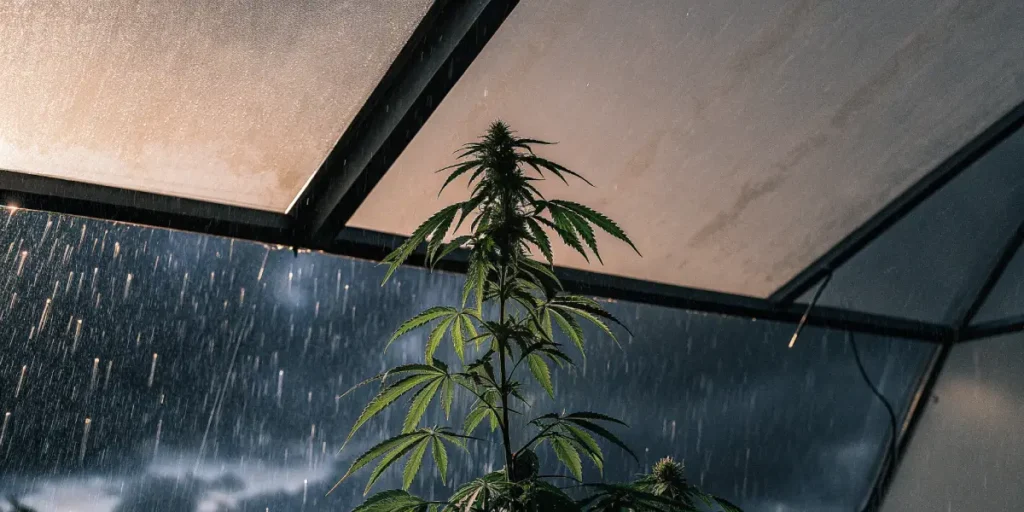
Real-Life Examples of Stress Management
Imagine a scenario where you notice your plants wilting due to heat stress. Acting quickly, you can introduce fans to improve air circulation and decrease temperature. This real-life example shows how immediate action can prevent damage and enhance THC levels.
Another example is dealing with nutrient stress. If you spot nutrient burn, flush the system with pH-balanced water to reset nutrient levels. This technique is crucial for growing cannabis high-THC strains stress adaptation.
In another scenario, suppose you encounter unexpected cold snaps. Using greenhouse covers or additional heating can protect your plants from temperature stress, showcasing the importance of being prepared for sudden environmental changes.
Managing pest infestations is another real-life example of stress management. Introducing beneficial insects or using organic pest control methods can mitigate stress caused by pests, ensuring healthy plant growth and THC production.
FAQs
What are common stress factors that affect THC levels?
Common stress factors include temperature, light, and nutrient levels. Each of these can impact THC levels. For instance, slight increases in temperature might boost THC, but excessive heat can harm plants.
Similarly, light stress can cause bleaching if too intense. Nutrient imbalances can lead to deficiencies or toxicities, both detrimental to plant health. Knowing these stress factors is key to managing them effectively.
Besides to these, environmental pollutants and soil health can also act as stress factors. Ensuring clean air and testing soil for contaminants can help mitigate these issues and maintain optimal growing conditions.
Water quality is another factor affecting stress levels. Using filtered or rainwater can prevent issues related to waterborne contaminants, ensuring consistent growth and THC production.
How can I use stress to increase THC potency?
Stress conditions increasing THC potency require careful management. Controlled stress, like slightly increased temperatures or strategic light exposure, can enhance THC production.
However, it’s crucial to monitor plant reactions closely. Adjustments should be gradual and based on plant responses to avoid adverse effects.
Implementing stress-induced THC enhancement techniques, such as utilizing CO2 enrichment during the flowering stage, can further increase THC levels by stimulating photosynthesis.
Another method involves using stress to trigger the plant’s natural defense mechanisms, which can lead to an increase in resin production, boosting THC content.
Which strains are best for stress conditions?
Certain strains, such as Bruce Banner 3, Gorilla Glue 4, and Zkittlez, are better suited for stress conditions. These strains have been bred to withstand environmental challenges, making them ideal for growers seeking high THC under stress.
When selecting strains, consider their resilience and adaptability to stress to ensure successful growth and high yields.
Researching the specific growth requirements of each strain can provide insights into their stress tolerance, allowing for better planning and management of growing conditions.
Additionally, consulting with other growers or seed banks can provide recommendations on strains that have performed well under similar stress conditions, aiding in strain selection.
Can stress negatively affect my cannabis plants?
Yes, excessive stress can harm cannabis plants. Overly high temperatures, intense light, and nutrient imbalances can lead to stunted growth, reduced yields, and potential plant death.
It’s essential to differentiate between beneficial stress and harmful stress. Careful monitoring and timely interventions help mitigate negative effects.
Using technology, such as automated climate control systems, can aid in maintaining optimal conditions, preventing harmful stress from impacting plant health.
Regularly inspecting plants for signs of stress and addressing issues immediately can prevent long-term damage and ensure a successful harvest.
What are the benefits of using stress management techniques?
Stress management techniques can enhance THC levels and overall plant health. By optimizing environmental conditions, growers can achieve higher yields and more potent plants.
Additionally, these techniques foster resilience in plants, allowing them to withstand various stress factors without significant harm.
Implementing stress management can also reduce the risk of crop loss, ensuring a more consistent and reliable production cycle for growers.
Furthermore, knowing and using these techniques can provide growers with the skills needed to adapt to changing conditions, maintaining high performance in their cultivation endeavors.



